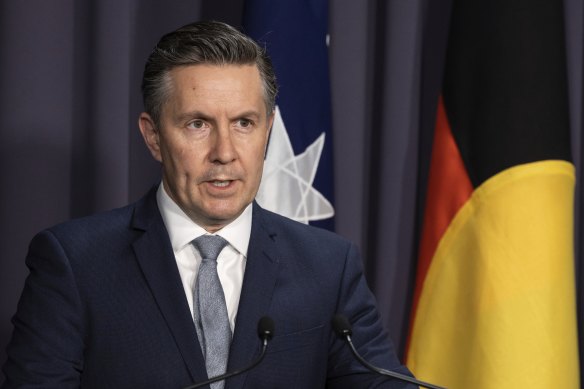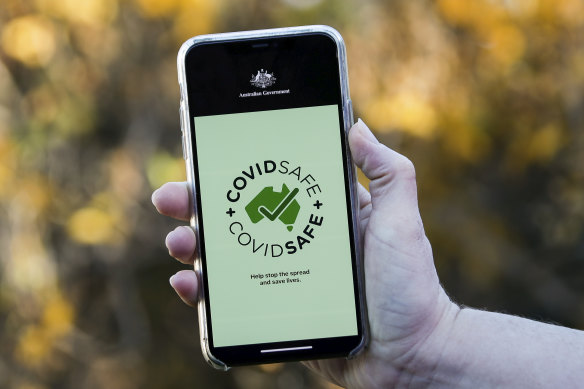The COVIDSafe app, introduced by the Morrison government in 2020, has been decommissioned after a senate select committee branded it an expensive failure and the health minister said state governments haven’t used it for months.
The app was updated on Wednesday night to remove all of its functionality, and users opening the app are now greeted with the message “Please uninstall COVIDSafe”. On Thursday, Health Minister Mark Butler said the app did little but burn through over $21 million of taxpayer money.
Health Minister Mark Butler said contact tracers working on the ground were far more effective than the COVIDSafe app.Credit:Alex Ellinghausen
“It is clear this app failed as a public health measure, and that’s why we’ve acted to delete it,” he said.
“This failed app was a colossal waste of more than $21 million of taxpayers’ money.”
Butler said while the app had 7.9 million registrations, fewer than 800 users consented to having their data added to the national store. Since its launch in April 2020, the app had only identified two positive cases that were not found by manual contact tracing, he said.
Former PM Scott Morrison described COVIDSafe as a way to protect the community against infection.Credit:Alex Ellinghausen
Designed to aid contact tracers by determining the people that an infected individual had been physically near, COVIDSafe was originally described by Morrison as like a sunscreen you need to apply when you go outside. But it was an immediate source of controversy.
Technical limitations meant that people using iPhones needed to keep the app on their screens, and their phones unlocked at all times, prompting concerns for their security as well as their phone batteries. After several updates, experts continued to question the efficacy of the Bluetooth-based tracking method — which was shown to work less than half of the time — as well as the government’s decision to decline help from Apple and Google.
After two months and six million downloads the app had failed to detect any close contacts that hadn’t already been identified by traditional contact tracers. A government report published in July of last year disclosed that the app only led to 17 unique close contacts as at May 2021. An evaluation published in the Lancet Public Health journal concluded this caused substantial additional work for contact tracers, without making a meaningful contribution to COVID response.
As state governments opened up in 2021 and moved to QR codes and check-in apps for contact-tracing, the expectation was that they’d integrate somehow with COVIDSafe, but this ended up not happening.
State-based QR check-in systems became a much more effective tool for contact tracing, with a Service NSW spokesperson confirming that check-in numbers remained high despite replaced requirements; there were more than 750,000 check-ins in the state during July this year.
According to the Albanese government, the last upload of data to the national COVIDSafe data store was in May 2021, and there has been no access to the data store by state authorities since January 2022.
And yet, the COVIDSafe app continued to operate at an estimated cost to taxpayers of up to $75,000 per month. The app cost more than $10 million in development, $7 million on advertising and marketing, $2.1 million in upkeep and more than $2 million on staff.
In the select committee on COVID-19’s final report in April this year, the app was described as a costly failure.
“By not recognising the app’s faults, or seeking to fix the app, the government has continued to oversee an application which is not fit for its intended purpose, has cost millions of dollars, and offered limited public value,” the report said.
“The committee recommends that the Australian Government cease any further expenditure of public funds on the failed COVIDSafe application.”
The government said that, following the app’s deletion, no data from COVIDSafe would be retained.
With Mary Ward and Ben Grubb.
Get news and reviews on technology, gadgets and gaming in our Technology newsletter every Friday. Sign up here.
Most Viewed in Technology
From our partners
Source: Read Full Article

